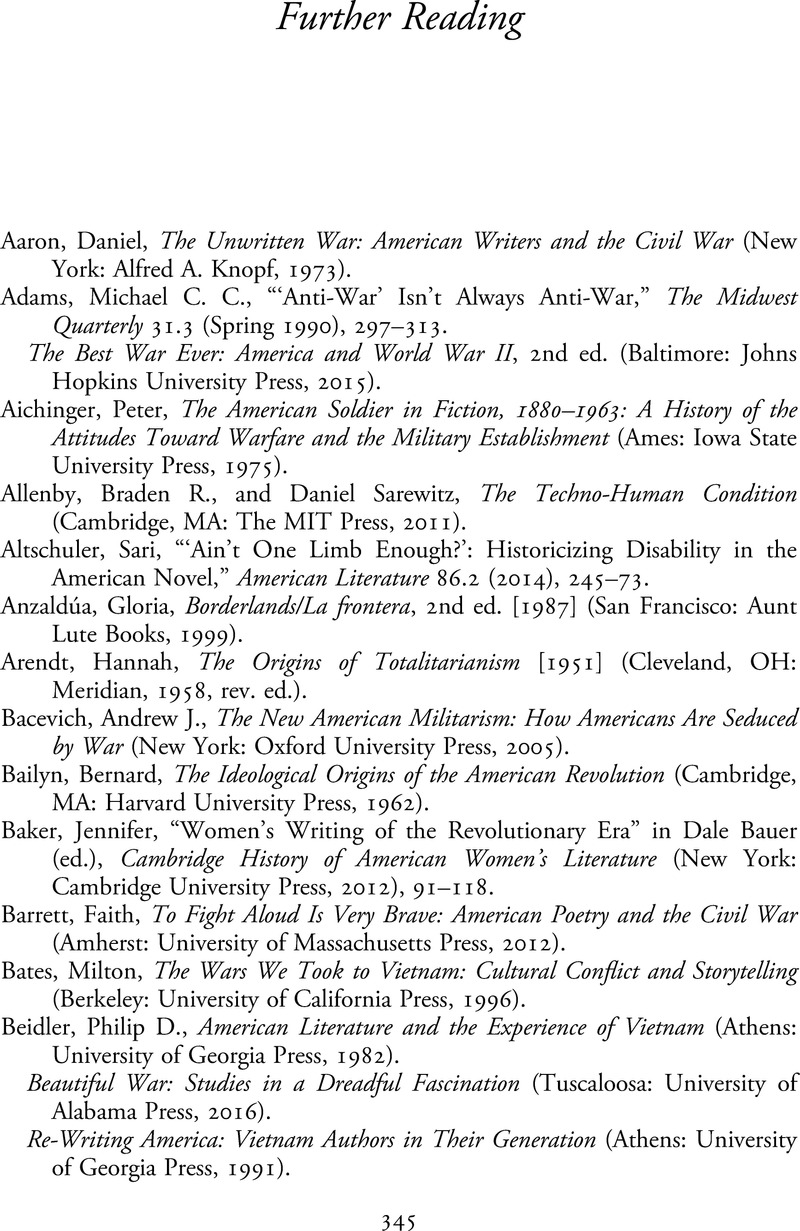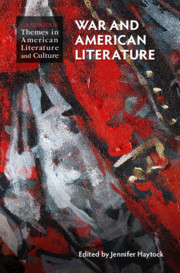Book contents
- War and American Literature
- Cambridge Themes in American Literature and Culture
- War and American Literature
- Copyright page
- Contents
- Contributors
- Acknowledgments
- Chronology
- Introduction
- Part I Aspects of War in American Literature
- Part II Cultural Moments and the American Literary Imagination
- Part III New Lines of Inquiry
- Further Reading
- Index
- References
Further Reading
Published online by Cambridge University Press: 20 January 2021
- War and American Literature
- Cambridge Themes in American Literature and Culture
- War and American Literature
- Copyright page
- Contents
- Contributors
- Acknowledgments
- Chronology
- Introduction
- Part I Aspects of War in American Literature
- Part II Cultural Moments and the American Literary Imagination
- Part III New Lines of Inquiry
- Further Reading
- Index
- References
Summary

- Type
- Chapter
- Information
- War and American Literature , pp. 345 - 356Publisher: Cambridge University PressPrint publication year: 2021



